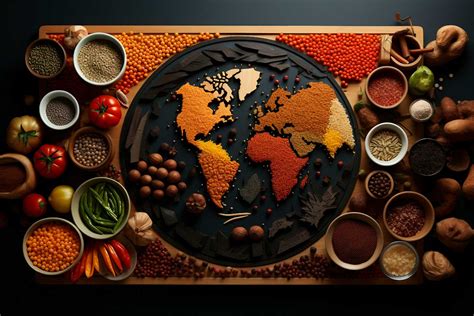Trends in the Food and Beverage Industry: A Delicious Forecast
The food and beverage industry is a dynamic landscape, constantly evolving to meet changing consumer preferences and technological advancements. Understanding these trends is crucial for businesses to stay competitive and relevant. Let's dive into some of the most significant shifts shaping the future of food and drink.
1. Health & Wellness Takes Center Stage
Consumers are increasingly prioritizing their health and wellness, demanding food and beverages that align with their values. This has fueled several key trends:
-
Plant-Based Powerhouses: The demand for vegan and vegetarian options continues to explode, with innovative meat alternatives, dairy-free products, and plant-based protein sources gaining significant market share. Expect to see even more sophisticated and delicious plant-based options hitting the shelves.
-
Functional Foods & Beverages: Food and drinks are no longer just for sustenance; they are seen as vehicles for improved health. Expect to see more products fortified with vitamins, probiotics, antioxidants, and other beneficial ingredients targeting specific health benefits. Think immunity-boosting smoothies, gut-health yogurts, and energy-enhancing drinks.
-
Transparency & Clean Labels: Consumers are demanding transparency about what's in their food. Clean labels, with minimal processing and easily recognizable ingredients, are becoming increasingly important. Brands are responding by highlighting natural ingredients and avoiding artificial colors, flavors, and preservatives.
2. Sustainability & Ethical Sourcing
Environmental concerns are driving a significant shift in consumer behavior. Sustainability is no longer a niche concept; it's a mainstream expectation.
-
Reducing Food Waste: The industry is actively seeking solutions to minimize food waste throughout the supply chain, from farm to table. Innovative packaging, improved storage methods, and creative upcycling initiatives are all playing a role.
-
Sustainable Packaging: Consumers are increasingly concerned about the environmental impact of packaging. Biodegradable, compostable, and recyclable packaging options are gaining popularity, and companies are investing in eco-friendly alternatives.
-
Ethical Sourcing & Fair Trade: Consumers are paying closer attention to the origins of their food and the ethical practices of the companies producing it. Fair trade certifications, sustainable farming practices, and transparent supply chains are becoming essential for building consumer trust.
3. Technology's Transformative Impact
Technology is revolutionizing the food and beverage industry, offering new opportunities for innovation and efficiency.
-
Personalized Nutrition: Data-driven insights are enabling the development of personalized nutrition plans and tailored food and beverage products. Expect to see more customized options based on individual dietary needs and preferences.
-
Food Tech Innovations: Advances in food technology are leading to new and improved food products. Examples include cellular agriculture (lab-grown meat), precision fermentation, and 3D-printed food.
-
E-commerce & Delivery Services: The rise of online grocery shopping and food delivery services has fundamentally changed how consumers access food and beverages. This trend is expected to continue growing, with further advancements in delivery technology and logistics.
4. Experiential Dining & the Rise of "Food as Entertainment"
The dining experience is becoming increasingly important. Consumers are seeking unique and memorable culinary experiences, driving several trends:
-
Restaurant Tech Integration: Table ordering systems, digital menus, and interactive experiences are enhancing the dining experience.
-
Focus on Culinary Experiences: Beyond the meal itself, restaurants are offering immersive experiences that go beyond simply eating. Think cooking classes, themed nights, and interactive dining concepts.
-
The Rise of Food Halls and Ghost Kitchens: Food halls are offering diverse culinary options in a single location, while ghost kitchens are focusing on delivery-only operations. Both formats demonstrate the evolving nature of restaurant businesses.
Conclusion: Adapting to the Changing Landscape
The food and beverage industry is constantly evolving. By understanding and adapting to these key trends, businesses can better meet consumer demands, innovate effectively, and secure a strong position in the market. Staying ahead of the curve requires continuous monitoring of emerging trends and a willingness to embrace change.
